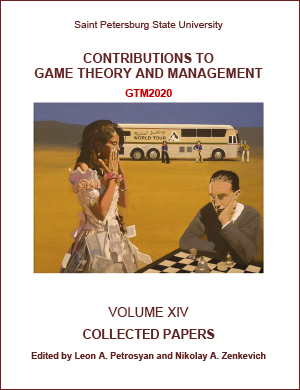Dynamic Shapley Value in the Game with Perishable Goods
DOI:
https://doi.org/10.21638/11701/spbu31.2021.20Abstract
The paper investigates two-stage stochastic minimum spanning tree games with perishable goods. The cooperative behaviour of the players is defined. At each stage, all players jointly take action to construct a network with a cost matrix. At the second stage, a particular player may leave the game, and the probability of this leaving depends on the cooperative behaviour of all players at the first stage. At each stage game, the total cost of the spanning tree is calculated to include the sum of the costs of the contained edges and the cost of the loss of perishable goods expended on that edge of the spanning tree. The characteristic functions in the game are considered, and the dynamic Shapley values are modified. The time consistency of the dynamic Shapley values is studied.
Keywords:
dynamic games, minimum cost spanning tree game, stochastic games
Downloads
References
Downloads
Published
How to Cite
Issue
Section
License
Articles of "Contributions to Game Theory and Management" are open access distributed under the terms of the License Agreement with Saint Petersburg State University, which permits to the authors unrestricted distribution and self-archiving free of charge.




